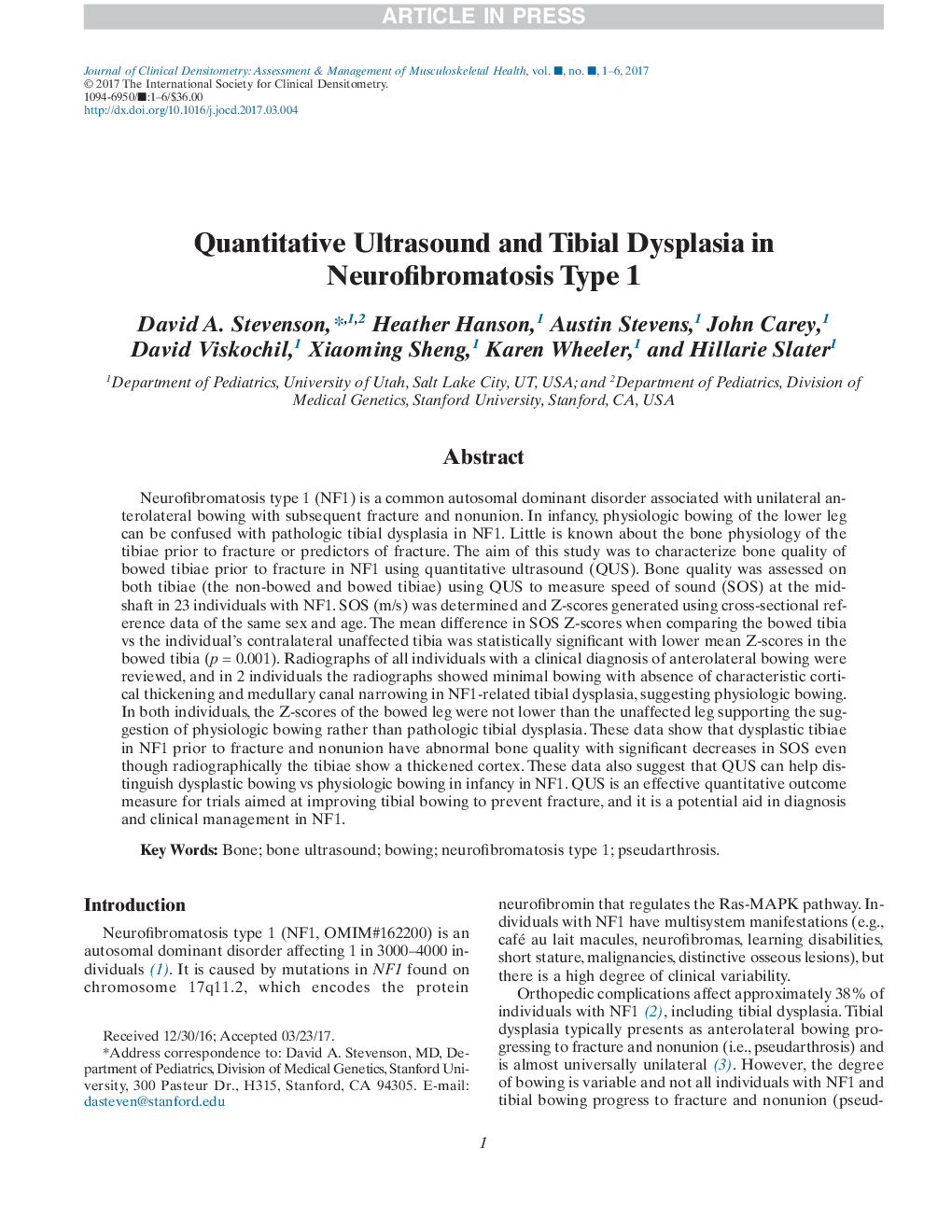| Article ID | Journal | Published Year | Pages | File Type |
|---|---|---|---|---|
| 8722914 | Journal of Clinical Densitometry | 2018 | 6 Pages |
Abstract
Neurofibromatosis type 1 (NF1) is a common autosomal dominant disorder associated with unilateral anterolateral bowing with subsequent fracture and nonunion. In infancy, physiologic bowing of the lower leg can be confused with pathologic tibial dysplasia in NF1. Little is known about the bone physiology of the tibiae prior to fracture or predictors of fracture. The aim of this study was to characterize bone quality of bowed tibiae prior to fracture in NF1 using quantitative ultrasound (QUS). Bone quality was assessed on both tibiae (the non-bowed and bowed tibiae) using QUS to measure speed of sound (SOS) at the mid-shaft in 23 individuals with NF1. SOS (m/s) was determined and Z-scores generated using cross-sectional reference data of the same sex and age. The mean difference in SOS Z-scores when comparing the bowed tibia vs the individual's contralateral unaffected tibia was statistically significant with lower mean Z-scores in the bowed tibia (pâ=â0.001). Radiographs of all individuals with a clinical diagnosis of anterolateral bowing were reviewed, and in 2 individuals the radiographs showed minimal bowing with absence of characteristic cortical thickening and medullary canal narrowing in NF1-related tibial dysplasia, suggesting physiologic bowing. In both individuals, the Z-scores of the bowed leg were not lower than the unaffected leg supporting the suggestion of physiologic bowing rather than pathologic tibial dysplasia. These data show that dysplastic tibiae in NF1 prior to fracture and nonunion have abnormal bone quality with significant decreases in SOS even though radiographically the tibiae show a thickened cortex. These data also suggest that QUS can help distinguish dysplastic bowing vs physiologic bowing in infancy in NF1. QUS is an effective quantitative outcome measure for trials aimed at improving tibial bowing to prevent fracture, and it is a potential aid in diagnosis and clinical management in NF1.
Related Topics
Health Sciences
Medicine and Dentistry
Endocrinology, Diabetes and Metabolism
Authors
David A. Stevenson, Heather Hanson, Austin Stevens, John Carey, David Viskochil, Xiaoming Sheng, Karen Wheeler, Hillarie Slater,
